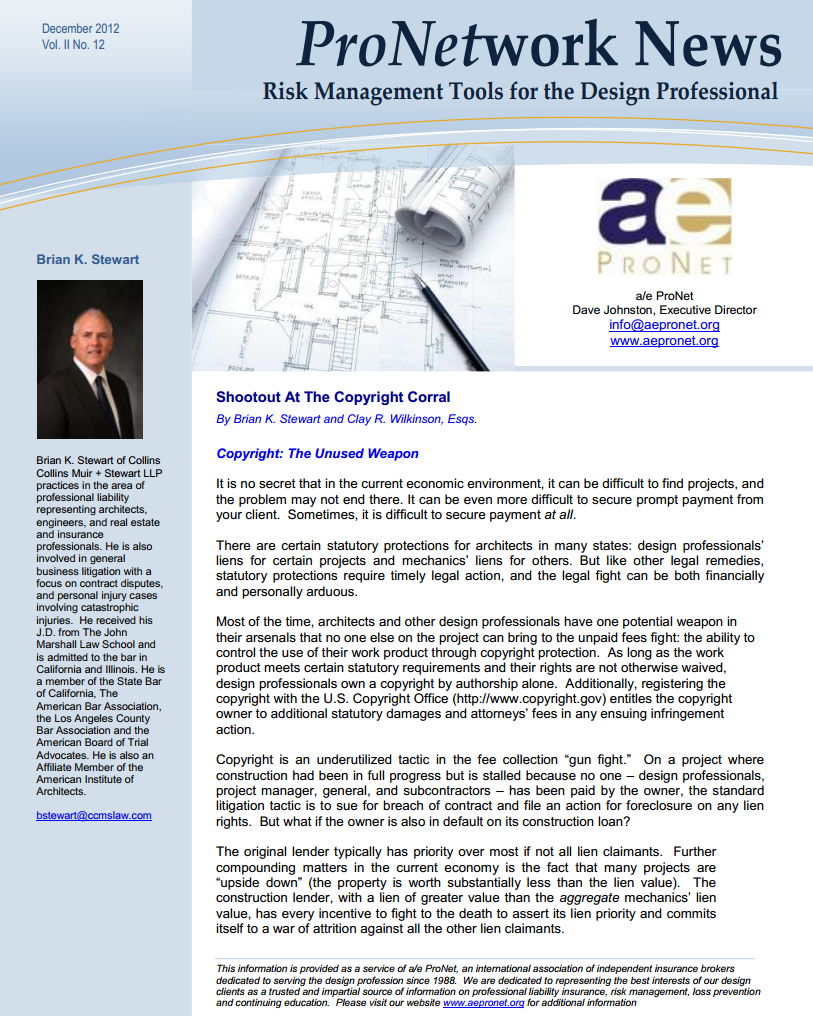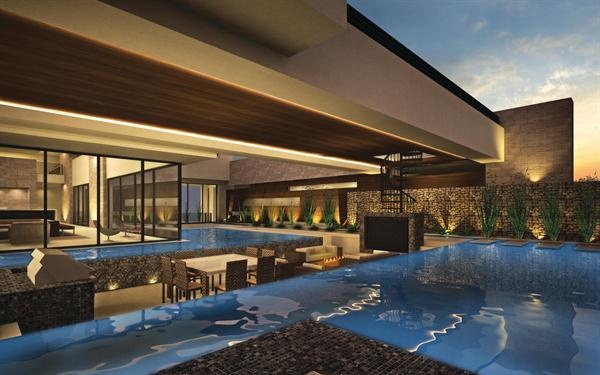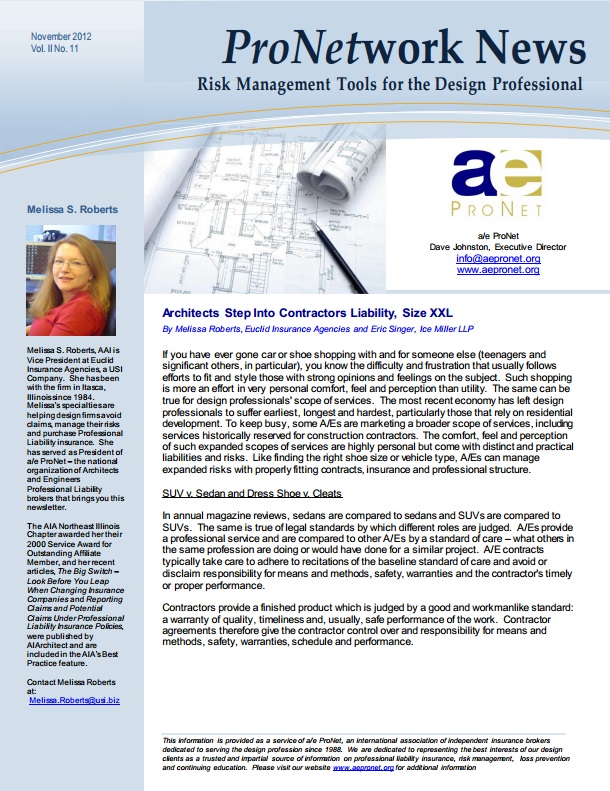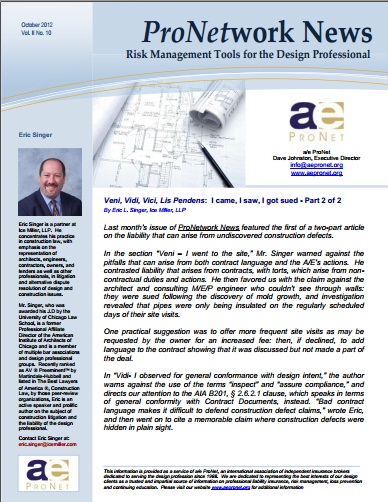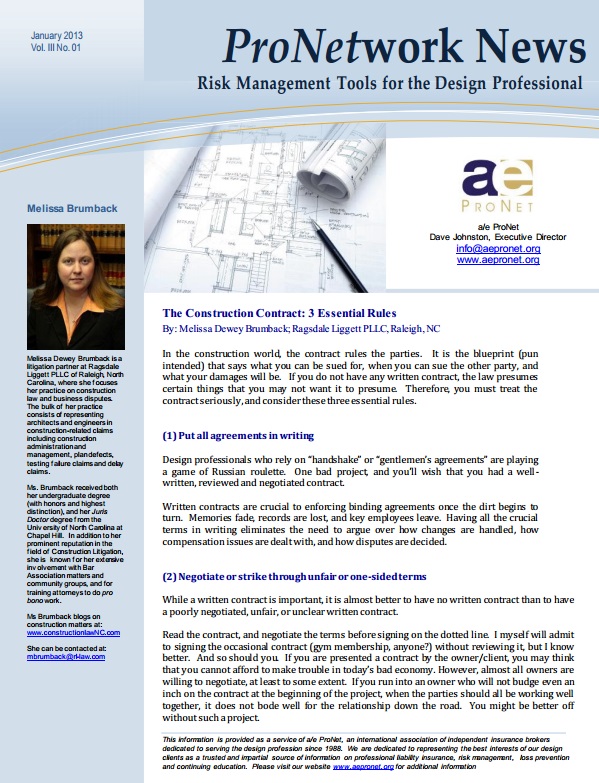 For design professionals, it’s good business to have a solid, fair contract in place before you begin work on a project. So, what are the three essential rules of putting together a construction contract? Our January 2013 ProNetwork News newsletter has the answer:
For design professionals, it’s good business to have a solid, fair contract in place before you begin work on a project. So, what are the three essential rules of putting together a construction contract? Our January 2013 ProNetwork News newsletter has the answer:
In the construction world, the contract rules the parties. It is the blueprint (pun intended) that says what you can be sued for, when you can sue the other party, and what your damages will be. If you do not have any written contract, the law presumes certain things that you may not want it to presume. Therefore, you must treat the contract seriously, and consider these three essential rules.
- Put all agreements in writing
- Negotiate or strike through unfair or one-sided terms
- Deal with discrepancies between the Proposal for Services and the Contract
(1) Put all agreements in writing
Design professionals who rely on “handshake” or “gentlemen’s agreements” are playing a game of Russian roulette. One bad project, and you’ll wish that you had a well-written, reviewed and negotiated contract.
Written contracts are crucial to enforcing binding agreements once the dirt begins to turn. Memories fade, records are lost, and key employees leave. Having all the crucial terms in writing eliminates the need to argue over how changes are handled, how compensation issues are dealt with, and how disputes are decided.
(2) Negotiate or strike through unfair or one-sided terms
While a written contract is important, it is almost better to have no written contract than to have a poorly negotiated, unfair, or unclear written contract. Continue reading “The Construction Contract: 3 Essential Rules”


